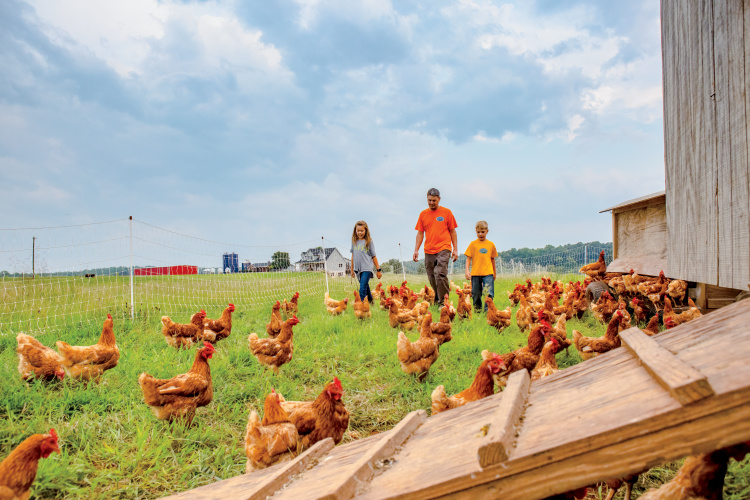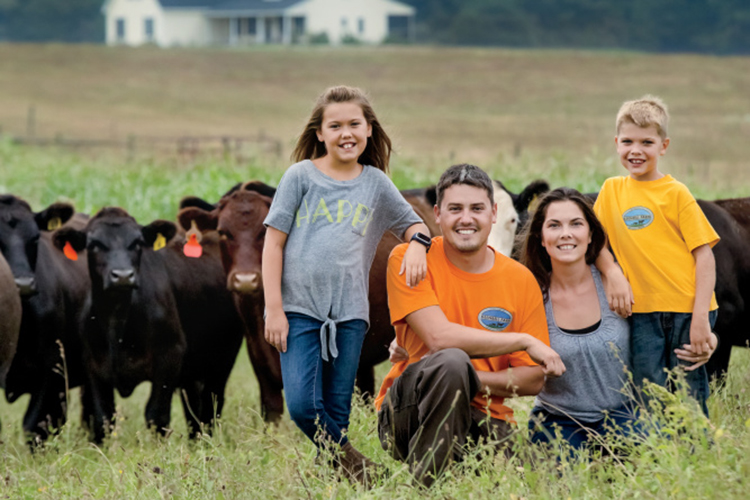Home > Farm > Environment > How Virginia Farmers Are Practicing Conservation
How Virginia Farmers Are Practicing Conservation
In partnership with: Virginia Department of Agriculture and Consumer Services

Gerald Garber walks into the early morning sunrise, enjoying the stillness of the fields stretching out around him. He is co-owner of Cave View Farms in the Shenandoah Valley of Virginia, which features 2,000 acres of crops and a 500-cow dairy.
Conservation of natural resources, Garber says, is an investment in his farm’s future, and he’s a longtime believer in caring for the land. In fact, he was the 2010 recipient of Shenandoah’s Basin Clean Water Farm Award.
Protecting the Water
Virginia encourages farms to adopt resource management plans, but participation is voluntary, placing confidence in the state’s agricultural community – in farmers like Garber. Garber placed approximately 6 miles of fencing along the streams that run through his farm. The fencing is designed to keep animals out of the streams, which in turn keeps the stream banks intact and the water cleaner. He has also constructed crossings so the water isn’t muddied when animals or equipment do cross the stream.
Garber says he noticed that his animals were healthier if they stayed out of the water.
“I didn’t wake up one morning and decide to be a conservationist,” Garber says. “We started out with rotational lots to keep the animals clean and we liked the results and wanted the rest of the farm to look that way.”
Rotating lots means strategically moving the cattle from one area to another on the farm. The result is a consistently drier, cleaner environment for the herd.

“Our first purpose in how we did things wasn’t conservation, it was to take the best possible care of the animals,” Garber says.
The result was clean, healthy animals and clean, healthy water.
“The water is running clear,” he says. “There’s no evidence that several hundred cattle are upstream. That’s the way it should be, and it’s doable. The stream enters and leaves my property clean. That’s good for the animals, the farm and the community.”
Working for the Environment
Steve Sturgis, co-owner of Tri-S Farms on the Eastern Shore of Virginia, uses cover crops, buffer systems and retention ponds on his 1,000-acre farm. Sturgis also does custom work for an additional 2,000 acres of crops. Precision agriculture and section control on the sprayers are used to make sure optimum amounts of nutrients or repellents are applied. Reducing application overlap saves him money and is better for the environment.
Sturgis was one of 10 recipients of the Grand Basin Clean Water Farm Award from Virginia’s Department of Conservation and Recreation in 2015 for his efforts in protecting the environment.
Sturgis says his environmental efforts are driven by the historical preservation of the area where his farm is located, on the Chesapeake Bay and Cherrystone Creek.

The operators of Keenbell Farm in Rockville share that commitment. Father and son, Eddie and C.J. Isbell, have worked for more than a decade to improve soil health.
“With every decision we make in our daily activities, we look to how it affects the land, wildlife and the environment surrounding the farm,” C.J. says.
The duo manages land that was formerly rented to a conventional grain producer and now grows food-grade heritage grains and serves as pastureland for animals. Altogether, Keenbell Farm consists of 350 acres split between heritage grains and a meat operation, including beef, pork and chicken.
The farm was the recipient of the Clean Water Farm Award from the District of Conservation Resources and Natural Conservation Service in 2013 and the Virginia Farm Bureau State Environmental Stewardship Award in 2012. As a third-generation farmer, C.J. says he must preserve the land for the future generations.
“The best part of our daily life is to see the positive impact on the land that occurs through our decisions,” he says. “We also appreciate the response we receive from our customers who enjoy the products we are able to produce.”



